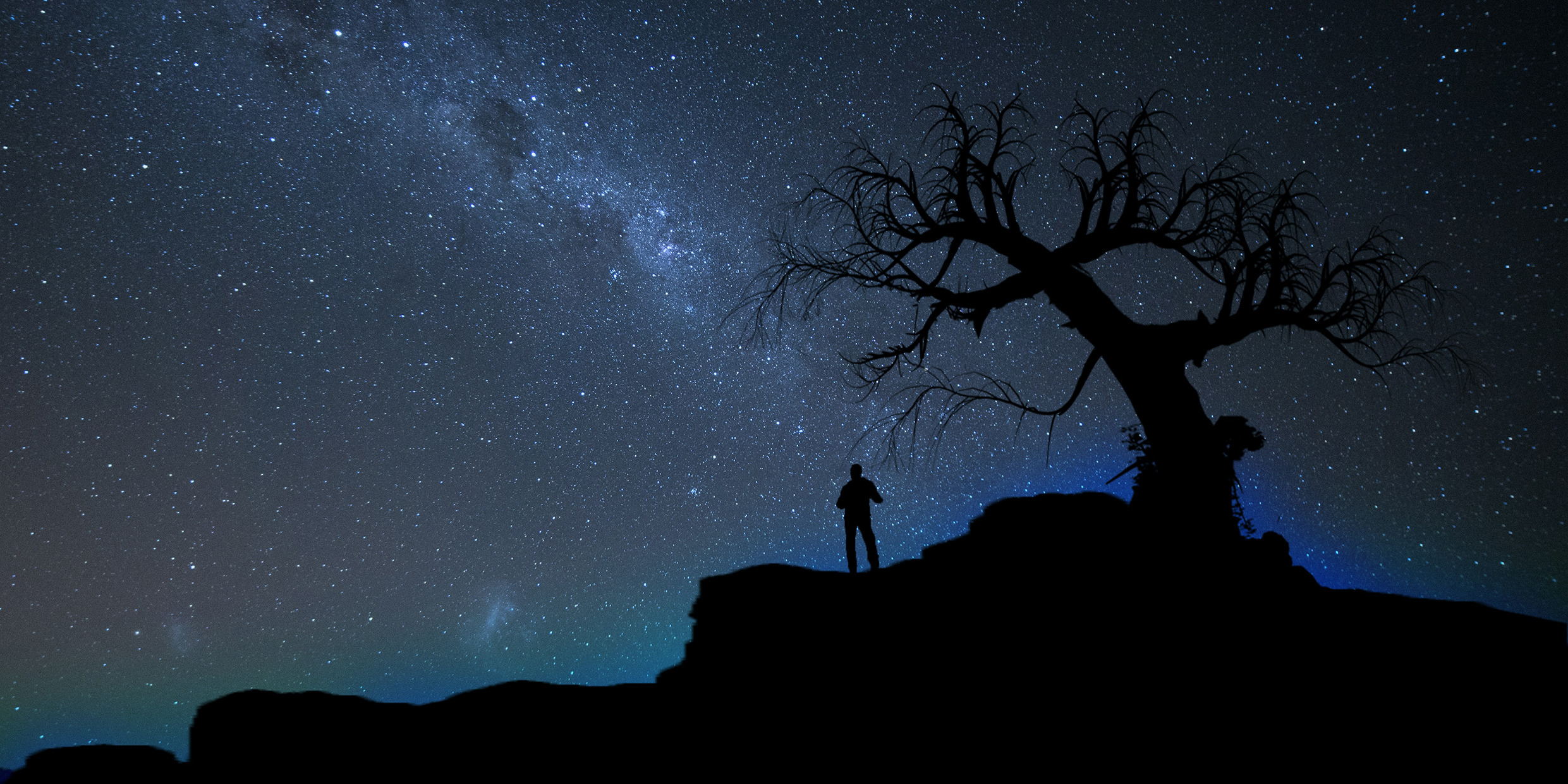Originally published 27 July 1998
“When the pulse of the first day carried it to the rim of night, First Woman said to First Man, ‘The people need to know the laws. To help them we must write the laws for all to see’ …And so she began, slowly, first one and then the next, placing her jewels across the dome of night, carefully designing her pattern so all could read it.”
But Coyote grew bored watching First Woman carefully arranging the stars in the sky: “Impatiently he gathered two corners of First Woman’s blanket, and before she could stop him he flung the remaining stars out into the night, spilling them in wild disarray, shattering First Woman’s careful patterns.”
These episodes from the Navajo story of creation are from How the Stars Fell Into the Sky, a lyrical children’s book by Jerrie Oughton.
It is a lovely story, full of ancient wisdom. For centuries, Navajo children heard the story at an elder’s knee. The story was taken literally, or at least accepted with a willing suspension of disbelief.
I heard a similar creation story in my youth — of Adam and Eve and the Garden of Eden, the Tree of Knowledge of Good and Evil, and the Serpent. I accepted the story with a willing suspension of disbelief.
All cultures, everywhere on Earth, have stories, passed down in scriptures, traditions or tribal myths, that answer the questions: Where did the world come from? What is our place in it? What is the source of order and disorder? What will be the fate of the world? Of ourselves?
No people can live without a community story.
Today, a New Story exists for those who choose to accept it. It is the product of thousands of years of human curiosity, observation, experimentation, and creativity. It is an evolving story, not yet finished. Perhaps it will never be finished.
It is a story that begins with an explosion from a seed of infinite energy. The seed expands and cools. Particles form, then atoms of hydrogen and helium. Stars and galaxies coalesce from swirling gas. Stars burn and explode, forging heavy elements — carbon, nitrogen, oxygen — and hurling them into space. New stars are born, with planets made of heavy elements.
On one planet near a typical star in a typical galaxy life appears in the form of microscopic self-replicating, carbon-based ensembles of atoms. Life evolves, over billions of years, resulting in ever more complex organisms.
Continents move. Seas rise and fall. The atmosphere changes. Millions of species of life appear and become extinct. Others adapt, survive, and spill out progeny.
At last, consciousness appears. One of the millions of species on the planet looks into the night sky and wonders what it means. Feels the spark of love, tenderness, responsibility. Makes up stories — of First Woman and Coyote, of Adam, Eve, and the Serpent — eventually making up the New Story.
The New Story has three important advantages over all the stories that have gone before.
It works. It works so well that it has become the irreplaceable basis of technological civilization.
We test the New Story in every way we can devise, in its particulars, and in its totality. For example, we build giant particle accelerating machines to see what happened in the first hot moments of the Big Bang. We put telescopes into space to look for the radiation of the primeval explosion. With spectroscopes and radiation detectors we analyze the composition of stars and galaxies and compare them to our theories for the origin of the world.
Always and in every way we try to prove the story wrong. When the story fails, we change it.
It is a universal story. Although originally a product of Western culture, it has become the story of all educated peoples throughout the world. There is no such thing as European science, Chinese science, Navajo science; scientists of all cultures, religions, and political persuasions exchange ideas freely and apply the same criteria of verification and falsification.
Like most children, I was taught that my story was the “true story” and that all others were false, or at best (like the Navajo tale of how the stars fell into the sky) sweet fairy tales. Sometimes our so-called true stories gave us permission to hurt those who lived by other stories.
In a world of international air travel, instant exchange of information, and weapons of mass destruction, we can no longer afford to squabble over which of our many traditional stories is true. The New Story, by its universality, helps put the old animosities behind us.
It is a story that emphasizes the connectedness of all people and all things.
Some of the old stories, such as the one I was taught as a child, placed humankind outside of space and time, gifted us with unworldly spirit, and gave us dominion over the millions of other creatures of the Earth.
The New Story places us squarely in a cosmic unfolding of space and time, and teaches our biological affinity to all humanity. We are inextricably related to all of life, to the planet itself, and even to the lives of stars.
We should treasure the ancient stories for the wisdom and values they teach us. We should praise the creation in whatever poetic languages and rituals our traditional cultures have taught us.
But only the New Story has the global authority to help us navigate the future. Of all the stories, it is certainly the truest. It is the only one whose feet have been held to the fire of exacting experience.



